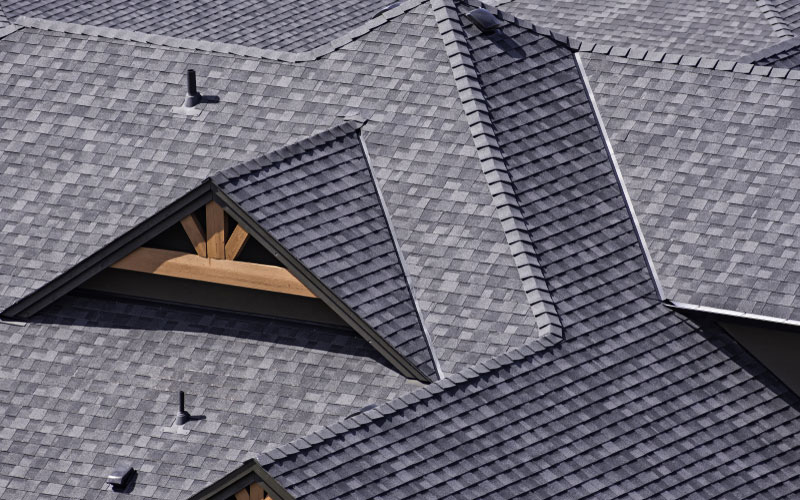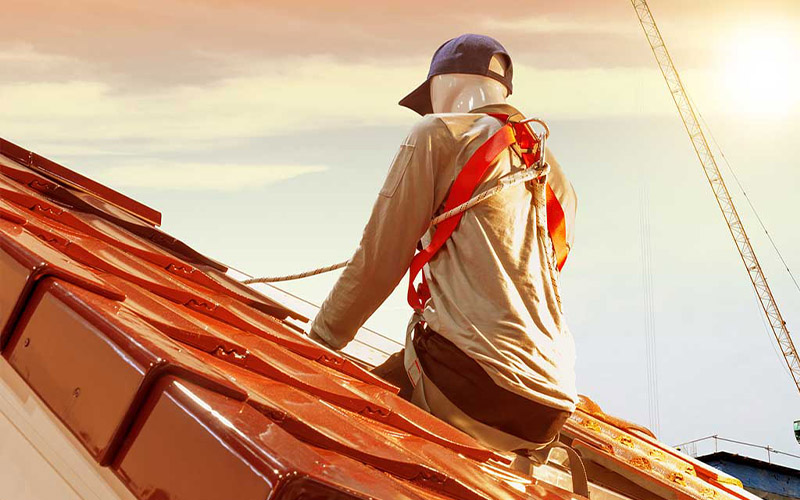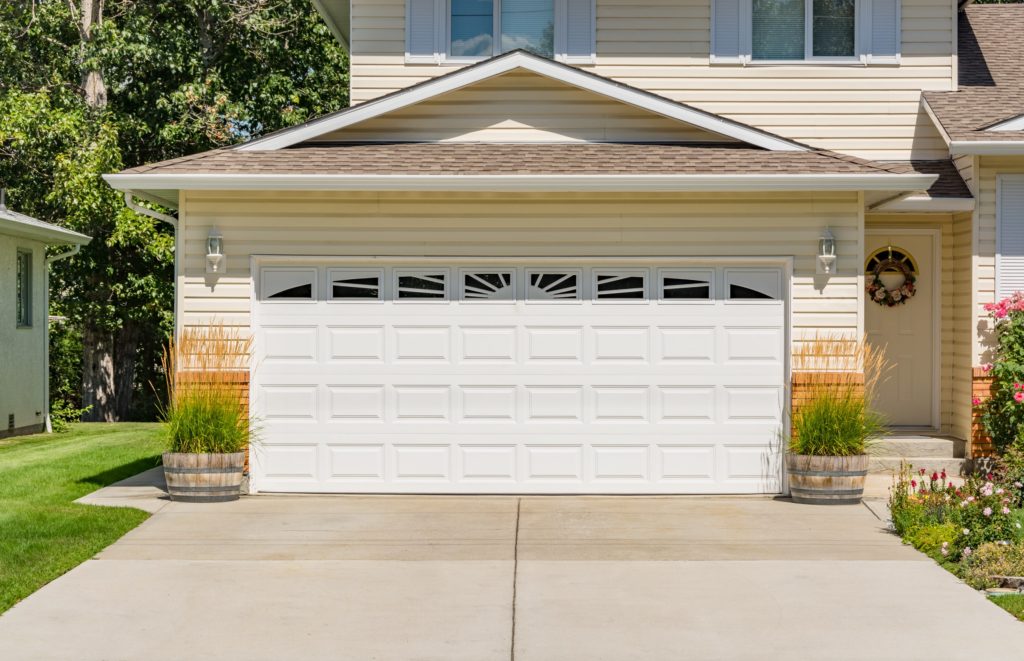The Ultimate Guide to Roof Cleaning: Tips and Best Practices
Picture this: a crisp morning sun rises, casting its first golden rays over your neighborhood. As you step outside with your coffee, you look up at your home and notice that your roof, instead of gleaming in the sunlight, is streaked with unsightly black stains and patches of moss. It’s a common sight that many homeowners dread but often overlook. Neglecting your roof’s cleanliness not only mars your home’s curb appeal but also invites long-term damage, potentially costing you a fortune in repairs. Fear not! This ultimate guide to roof cleaning is here to help you restore your roof’s pristine condition with expert tips and best practices. Let’s dive in!
Identifying Roof Contaminants: Understanding the Culprits
Identifying roof contaminants is a crucial step in maintaining the integrity and appearance of your roof. Common culprits include algae, moss, lichen, and organic debris such as leaves and branches. Algae, which often appear as dark streaks on asphalt shingles, thrive in humid environments and can retain moisture, potentially leading to water damage and a reduced roof lifespan. Moss, recognizable by its thick, green clumps, tends to grow between shingles, lifting them and allowing water to seep underneath, causing leaks and rot. Lichen, a symbiotic combination of fungi and algae, forms root-like structures that penetrate roofing materials, further exacerbating damage. Additionally, accumulated debris not only traps moisture but can also create a breeding ground for pests, adding another layer of concern.
Understanding these contaminants and their effects on different roof types is essential for implementing effective cleaning and maintenance strategies. For instance, while mild detergents and low-pressure washing may suffice for algae, moss might require more rigorous removal methods and preventive treatments. Regularly clearing debris helps prevent the buildup of organic material that can foster moss and algae growth. Additionally, regular inspections allow for the early detection of lichen, which can be challenging to remove once it has established itself. By knowing the specific threats your roof faces, you can tailor your cleaning approach to effectively mitigate these issues, ensuring your roof remains in optimal condition.
Recognizing and addressing roof contaminants not only preserves the aesthetic appeal of your home but also extends the lifespan of your roofing materials. Proactive measures, such as scheduled cleanings and treatments, can prevent minor issues from escalating into significant problems, saving you time and money in the long run. Moreover, a well-maintained roof enhances your home’s overall value and energy efficiency, as it better protects against the elements and reduces the likelihood of costly repairs. By understanding the various contaminants that can affect your roof, you empower yourself to take the necessary steps to maintain a clean, durable, and visually appealing roof, safeguarding your home against unnecessary wear and tear.

Roof Cleaning
Safety Precautions: Protecting Yourself and Your Property
When undertaking roof cleaning, prioritizing safety precautions is essential to protect both yourself and your property. The first step is to equip yourself with the right gear. Wearing non-slip shoes, protective gloves, and safety goggles can prevent slips, skin irritation, and eye injuries from debris or cleaning agents. Additionally, using a sturdy ladder with proper stabilizers is crucial for safe access to your roof. Always ensure the ladder is placed on a flat, stable surface and have someone hold it steady if possible. For those unfamiliar with heights or unsure of their balance, hiring professional help is often the safest option.
Furthermore, protecting your property involves preparing the surrounding area before any cleaning begins. Cover plants, shrubs, and outdoor furniture with plastic sheeting to shield them from potentially harmful cleaning solutions and falling debris. Disconnect any outdoor electrical equipment to avoid water-related hazards. It’s also wise to clear the gutters and downspouts beforehand to ensure that runoff from cleaning doesn’t lead to blockages or water damage. Using gentle, biodegradable cleaning agents can minimize environmental impact while still effectively removing contaminants. Ensuring these preparations are in place not only safeguards your property but also makes the cleaning process more efficient and less stressful.
Lastly, working on a roof necessitates awareness of weather conditions. Avoid cleaning during or immediately after rain, as wet surfaces increase the risk of slipping. Similarly, high winds can make maintaining your balance difficult. Ideally, choose a dry, calm day for roof cleaning tasks. If using chemical cleaners or high-pressure washers, follow the manufacturer’s instructions carefully to avoid damaging roofing materials. Taking these safety precautions seriously not only protects you from potential harm but also helps maintain the integrity and longevity of your roof. By approaching roof cleaning with a well-prepared and cautious mindset, you can achieve effective results while minimizing risks.
Choosing the Right Cleaning Agents: Eco-Friendly and Effective Options
Selecting the right cleaning agents for your roof is crucial, and opting for eco-friendly yet effective options can make a significant difference. Eco-friendly cleaning agents are designed to minimize environmental impact while still providing robust cleaning power. These solutions typically contain biodegradable ingredients that break down naturally, reducing the risk of harming plants, animals, and water sources. When choosing an eco-friendly cleaner, look for products free from harsh chemicals such as chlorine, phosphates, and synthetic fragrances. These natural formulas not only protect the environment but also preserve the integrity of your roofing materials, preventing damage that can be caused by more abrasive substances.
Effectiveness is a key consideration when selecting eco-friendly roof cleaning agents. Many green cleaners leverage the power of natural enzymes, citrus extracts, or oxygen-based compounds to tackle common roof contaminants like algae, moss, and lichen. These ingredients work by breaking down organic matter, making it easier to rinse away without the need for high-pressure washing, which can damage roofing materials. Additionally, some eco-friendly cleaners include agents that inhibit the regrowth of moss and algae, extending the time between cleanings and maintaining your roof’s appearance longer. Reading product labels and reviews can help you assess the efficacy of these green options and ensure they meet your cleaning needs.
Incorporating eco-friendly cleaning agents into your roof maintenance routine not only benefits the environment but also enhances the safety and health of your home. Traditional chemical cleaners can release harmful fumes and residues that may pose risks to both human health and household pets. By switching to natural, non-toxic alternatives, you create a safer living space while effectively maintaining your roof. Moreover, using environmentally responsible products aligns with broader sustainability efforts, contributing to the overall well-being of the planet. In essence, choosing the right eco-friendly and effective cleaning agents provides a holistic approach to roof care, ensuring a clean, durable, and sustainable roof for years to come.
Cleaning Methods for Different Roof Types: Tailored Techniques
Different roof types require tailored cleaning methods to ensure effective maintenance without causing damage. Asphalt shingles, one of the most common roofing materials, are susceptible to algae and moss growth. For these roofs, low-pressure washing combined with an appropriate cleaning solution is recommended. High-pressure washing should be avoided as it can strip away the protective granular coating of the shingles. Instead, a garden hose with a specialized nozzle or a soft wash system can gently remove contaminants without compromising the shingles’ integrity. Additionally, applying a zinc or copper-based treatment can prevent future algae growth, keeping your roof clean for longer.
Metal roofs, known for their durability and resistance to many environmental factors, still require specific cleaning techniques to maintain their appearance and functionality. A simple mixture of water and mild detergent applied with a soft brush or cloth can effectively clean dirt and grime without scratching the surface. It’s important to avoid abrasive tools and harsh chemicals that could corrode the metal. Rinsing thoroughly with water ensures no residue remains, which could otherwise lead to discoloration or damage. Regular maintenance, including clearing debris from seams and joints, helps preserve the roof’s structural integrity and aesthetic appeal.
Tile roofs, whether made of clay, concrete, or slate, demand careful handling due to their weight and fragility. Pressure washing at a low setting or using a soft wash system is ideal to remove moss, algae, and dirt without cracking or dislodging tiles. It’s crucial to use safe, compatible cleaning agents to avoid chemical reactions that could weaken the tiles. Moreover, inspecting tiles for cracks or damages before and after cleaning allows for timely repairs, preventing further issues. Ensuring proper foot placement and using safety equipment during cleaning reduces the risk of accidents and preserves the roof’s condition. By tailoring your cleaning methods to the specific needs of each roof type, you can effectively maintain their longevity and appearance.
Step-by-Step Cleaning Process: From Preparation to Finishing Touches
Beginning with the preparation phase, a thorough roof cleaning process requires careful planning and the right equipment. Start by inspecting your roof for any damage or loose shingles that need attention before cleaning. Clear the area around your home, covering plants, outdoor furniture, and other items with plastic sheeting to protect them from debris and cleaning agents. Gather essential tools such as a sturdy ladder, non-slip shoes, protective gloves, and safety goggles. Choose an appropriate cleaning solution suited to your roof type, such as a mild detergent for metals or an algae-specific cleaner for asphalt shingles. Ensuring these preparations are in place sets a solid foundation for a safe and efficient cleaning process.
The next step involves the actual cleaning of the roof, beginning with the removal of loose debris. Use a leaf blower or a broom to sweep away leaves, branches, and other debris that may have accumulated on the roof’s surface. For a more thorough clean, apply the chosen cleaning solution starting from the bottom of the roof and working your way up to prevent streaking. Use a garden hose with a specialized nozzle or a soft wash system to gently rinse the roof, avoiding high-pressure washers that can damage roofing materials. Pay special attention to areas with significant algae or moss growth, allowing the cleaning solution to sit for the recommended time before rinsing thoroughly.
Finally, the finishing touches involve ensuring no residue remains and taking steps to prevent future buildup. Rinse the roof thoroughly with water to remove any remaining cleaning solution, which could otherwise lead to discoloration or damage over time. Clean out the gutters and downspouts to ensure they are free of debris and function properly. Consider applying a preventative treatment, such as a zinc or copper solution, to inhibit the growth of algae and moss. Conduct a final inspection to ensure all areas are clean and intact, making any necessary repairs. By following this step-by-step cleaning process, you ensure a thorough, safe, and effective roof cleaning that enhances the longevity and appearance of your roof.
Preventative Maintenance: Keeping Your Roof Clean for Longer
Preventative maintenance is crucial for keeping your roof clean and extending its lifespan. Regular inspections are the first line of defense against potential issues. Schedule biannual roof inspections, ideally in the spring and fall, to identify and address problems early. Look for signs of algae, moss, lichen, or debris accumulation that could lead to more serious damage if left untreated. During these inspections, also check for damaged or missing shingles, cracks, and leaks. Early detection enables timely repairs, which can prevent small issues from escalating into major, costly problems.
Implementing a routine cleaning schedule tailored to your roof type is another essential aspect of preventative maintenance. For instance, asphalt shingles benefit from treatments that inhibit algae and moss growth, while metal roofs require periodic gentle washing to remove grime and prevent corrosion. Using environmentally friendly cleaning agents can protect your roof’s integrity and reduce environmental impact. Additionally, consider installing zinc or copper strips along the roof ridge; when it rains, thes

Roof Cleaning
e metals release ions that naturally impede the growth of algae and moss, keeping your roof cleaner for longer periods. Keeping gutters and downspouts clear of debris also ensures proper water drainage, reducing the risk of water damage and mold growth on your roof.
Lastly, managing the surrounding environment plays a significant role in maintaining a clean roof. Trim overhanging tree branches to reduce leaf litter and minimize shade, which promotes algae and moss growth. Ensure adequate ventilation in the attic to prevent moisture buildup that can accelerate the growth of contaminants on the roof. Installing gutter guards can help keep leaves and debris out of the gutters, ensuring efficient water flow away from the roof. By taking these proactive measures, you create a hostile environment for contaminants, thereby preserving your roof’s appearance and functionality. Preventative maintenance not only keeps your roof looking pristine but also enhances its durability and reduces long-term repair costs.
Professional Roof Cleaning Services: When to Call in the Experts
While many homeowners prefer the DIY approach for roof cleaning, there are times when calling in professional roof cleaning services is the best option. One of the primary reasons to hire experts is the complexity or scale of the job. If your roof has extensive moss or algae growth, or if it hasn’t been cleaned in years, professionals have the equipment and expertise to handle these more challenging situations efficiently. They utilize specialized tools and cleaning solutions that may not be readily available to homeowners, ensuring a thorough and safe clean without damaging your roofing materials.
Safety is another critical factor in deciding to use professional roof cleaning services. Roof cleaning can be hazardous, especially for those unfamiliar with working at heights or those lacking proper safety gear. Professionals are trained to navigate roofs safely, using harnesses, non-slip footwear, and other safety equipment to prevent accidents. Additionally, they are skilled in handling various roof types and conditions, reducing the risk of damage that can occur from improper cleaning techniques. If your roof has a steep pitch or complex architecture, enlisting professional help ensures the job is done correctly while minimizing safety risks.
Lastly, time and convenience often make professional roof cleaning services a worthwhile investment. Thoroughly cleaning a roof can be a time-consuming task, requiring significant effort and attention to detail. Professionals can complete the job more quickly and efficiently, freeing up their time for other responsibilities. Moreover, they can provide maintenance recommendations and offer preventative treatments to keep your roof cleaner for longer. By relying on expert services, you can ensure that your roof remains in optimal condition with minimal disruption to your daily routine. Ultimately, knowing when to call in the experts can save you time, enhance safety, and preserve the integrity of your roof, making it a smart choice for many homeowners.
Conclusion
Ensuring your roof remains clean is more than a matter of aesthetics; it’s a critical aspect of home maintenance that safeguards your investment. By understanding the contaminants you face, prioritizing safety, choosing the right cleaning agents, applying specific methods for your roof type, following a thorough cleaning process, implementing preventative measures, and knowing when to seek professional help, you can maintain a roof that looks great and lasts longer. Embrace the tips and best practices outlined in this ultimate guide, and transform your roof from an eyesore into the crowning glory of your home. Make roof cleaning a part of your regular home care routine and enjoy the lasting benefits of a well-maintained roof.
https://www.google.com/maps?cid=465871782046421571




